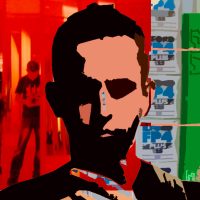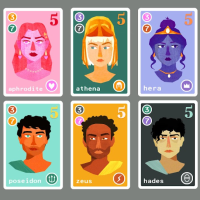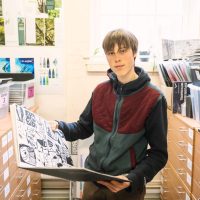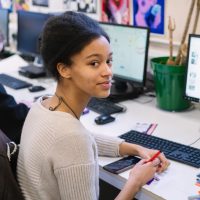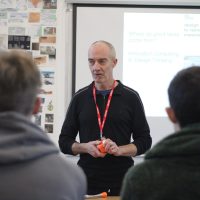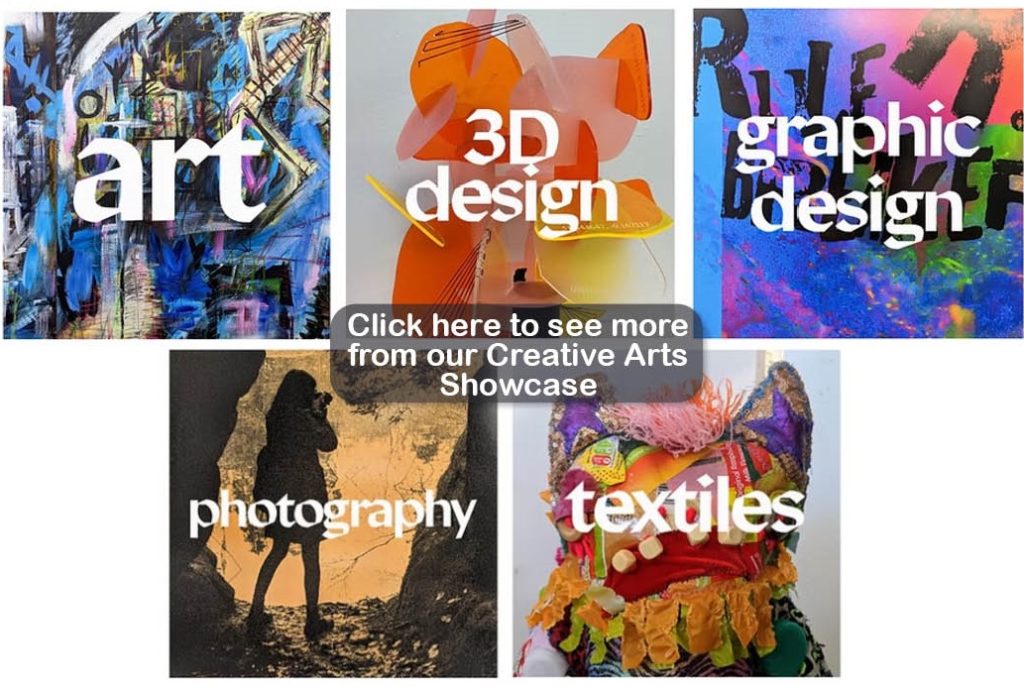
GCSE Graphic Design
Learn how to design logos, posters and packaging and understand how designers create the brands you love. Graphic Design is about creative problem solving and communicating ideas using the layout of images and text. Your Graphic Design lessons will blend Art skills with Digital skills and you’ll be exploring Adobe Photoshop as well as experimenting with printmaking, illustration and collage techniques. You’ll be set ‘client briefs’ and learn about the stages a designer goes through to realise exciting and successful work. You might be asked to create a logo and packaging for a new fast-food brand or to create digital illustrations for a fashion magazine. You’ll learn about key design movements, influential graphic designers and take inspiration from street artists. The coursework projects prepare you to tackle any design challenge with creativity and confidence and in the exam project at the end of the course, you get a choice of themes, a period of preparation and then a 10-hour practical exam to create your chosen design work.
You don’t need any previous experience of Graphic Design to join this course but if you have existing interest/skills/qualifications in art or digital design that will help get you off to a great start. In busy practical lessons you’ll learn about fonts and layout and how colour is used in design and you’ll gain skills and understanding that will be valuable for any creative career. Success on this Art and Design GCSE qualification can lead you to progress onto our Advanced Level Visual Arts courses.
Course Essentials
Courses Available
GCSE Graphic Design
PLUS
How The Course is Assessed
60% coursework, 40% externally set assignment ● Component 1: Portfolio (60%) 2 personal projects showcasing experimentation, research, and final designs. ● Component 2: Externally Set Assignment (40%) Respond to a theme provided by AQA, culminating in a final project completed under 10 hour supervised exam conditions.
Transferable Skills
Problem solving, creativity, layout, digital skills and understanding of visual language
Other Information
You do not need any prior knowledge of Photoshop or Illustrator to enrol onto this course.
Enquiries To
Rob Macdonald: rom@varndean.ac.uk
Staff Profiles
Rob Macdonald
Rob Macdonald teaches Graphic Design and Photography. He is a photographer and has exhibited internationally, in the USA and Italy, as well as in group and solo exhibitions in London and here in Brighton. He has work published in DOCU magazine and featured on SEEZEEN. He has a Masters in Design from Edinburgh College of Art and has been teaching for over 25 years. Rob is also head of Visual Arts at college.
Enrichments
Digital Illustration
Studying digital illustration is an exciting journey that merges creativity with digital technology. It offers the student the freedom to experiment with various styles and techniques, enabling them to create versatile works for print and digital media. As the field constantly evolves, students are motivated to learn and adapt, keeping their skills fresh and relevant. Overall, digital illustration provides a fulfilling opportunity for artistic expression and technical growth.
Portfolio Builder
Creating a graphic design portfolio is essential for showcasing your skills and creativity to potential employers or clients. A well-curated portfolio not only highlights your best work but also demonstrates your design process, versatility, and unique style. This enrichment class allows you the opportunity to put together a strong portfolio to help you stand out in a competitive job market, making it easier to attract opportunities and build professional connections. A graphic design portfolio is a vital tool for advancing your career and establishing your personal brand in the design industry.
Art Curator
We are excited to partner with a local gallery to hold an annual exhibition which a group of students on this enrichment course curate as a team. They learn about the role of a curator in the art world with input from local and international curators. Our curators learn about the process of selecting work, collaborating with others, publicising an exhibition and holding a launch event.
Art Enrichment
Art Enrichment encourages learners to expand their critical thinking and industry knowledge and to become clearer about their progression plans by being introduced to a range of artist practitioners. Participants will be inspired by meeting a range of professionals and hearing them talk about their life, work and ideas development. Regular visitors include Brighton artists; Murray Ballard, Photographer; Sarah Jones, Illustrator; Jon Mills, Sculptor and Andrew Gifford, Painter. These talks also include some local university and college presentations.
Student Work
“[Talking of our Creative Arts Showcase 2024] Each piece showed a deep understanding of design principles, seamlessly combining technical skill with creative vision. It’s clear that these young artists are not just learning to create art; they are learning to communicate and resonate with their audience. The works on show are akin to University level, and they convey a disciplined approach to art and design that would rival any industry standard.”
Sarah Crossley, ILOVEDUST
Creative Arts Showcase 2024
Varndean College’s annual Creative Arts Showcase is a dynamic and vibrant celebration of the outstanding creativity and diverse talents of the year’s graduating students. It features live music, dance and drama performances, interactive gaming and film screenings, alongside exhibitions of 3D design, textiles, graphic design, art and photography.
International Trips
Visual Arts love to go on international trips, most recently we’ve been to Paris, Madrid and Berlin. Our artists, designers and photographers return from visits abroad with well-used sketchbooks, hundreds of photographs and many new and creative ideas to develop in their projects back at college.

